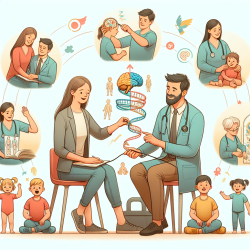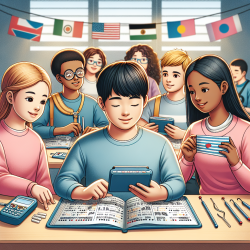Introduction
As a Special Education Director, I often find myself delving into research that sheds light on the unique challenges faced by children with special needs. One such area of interest is the neurodevelopmental outcomes of children with non-syndromic single suture craniosynostosis (SSC). The recent study, "Assessing Long-Term Neurodevelopment among Children with Non-Syndromic Single Suture Craniosynostosis," provides valuable insights that can enhance the skills of practitioners working with these children.
Understanding the Research
The study conducted by Kalantar-Hormozi et al. (2022) examined the intellectual functioning of children with SSC, focusing on various age groups. The research highlights significant differences in verbal IQ and processing speed between children with SSC and their unaffected peers. While the Full Scale IQ (FSIQ) of children with SSC falls within the normal range, it is slightly lower than that of healthy counterparts.
Key Findings and Their Implications
- Children aged 2 to 6 years with SSC had significantly lower verbal IQ compared to unaffected peers.
- Children aged 6 to 16 years with SSC showed significantly lower processing speed.
- Despite these differences, the FSIQ of children with SSC remains within the normal range.
These findings underscore the importance of early intervention and tailored educational strategies for children with SSC. Practitioners can use this information to develop targeted therapies that address specific cognitive challenges, such as verbal comprehension and processing speed.
Practical Applications for Practitioners
To enhance their skills and better support children with SSC, practitioners can consider the following approaches:
- Early Assessment and Intervention: Conduct regular assessments to monitor cognitive development and identify areas requiring intervention.
- Customized Educational Plans: Develop individualized education plans (IEPs) that focus on strengthening verbal skills and improving processing speed.
- Collaborative Efforts: Work closely with parents, teachers, and therapists to create a supportive learning environment.
- Continuous Professional Development: Stay informed about the latest research and strategies through conferences, webinars, and publications.
Encouraging Further Research
While this study provides valuable insights, there is still much to learn about the long-term neurodevelopmental outcomes of children with SSC. Practitioners are encouraged to engage in further research to explore additional factors that may influence cognitive development in these children. Collaborating with researchers and participating in longitudinal studies can contribute to a deeper understanding of SSC and its impact on neurodevelopment.
Conclusion
The research on SSC offers a foundation for practitioners to enhance their skills and provide more effective support to children with this condition. By implementing the study's findings and engaging in ongoing research, practitioners can unlock the potential of children with SSC, helping them achieve their fullest capabilities.
To read the original research paper, please follow this link: Assessing Long-Term Neurodevelopment among Children with Non-Syndromic Single Suture Craniosynostosis.










